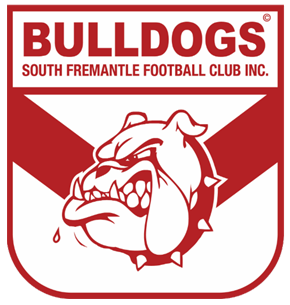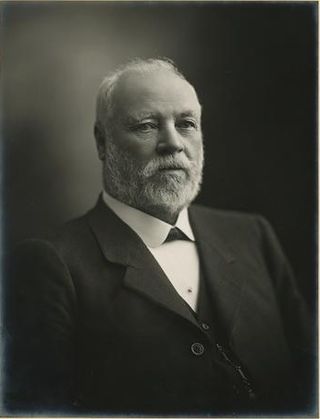Related Research Articles

Henry Daglish was an Australian politician who was the sixth premier of Western Australia and the first from the Labor Party, serving from 10 August 1904 to 25 August 1905. Daglish was born in Ballarat, Victoria, and studied at the University of Melbourne. In 1882, he worked as a mechanical engineer but soon switched to working in the Victorian public service. He first stood for election in 1896 but failed to win the Victorian Legislative Assembly seat of Melbourne South. He then moved to Subiaco, Western Australia, where he found work as a chief clerk in the Western Australian Police Department. In 1900, Daglish was elected to the Subiaco Municipal Council and in April the following year, he was elected to the Western Australian Legislative Assembly as the member for the newly created seat of Subiaco, becoming one of six Labor members in the Western Australian Legislative Assembly. The party elected him as its whip, and he resigned from the Subiaco council on 1 May 1901. On 1 December 1902, Daglish was sworn in as mayor of Subiaco, having been elected the previous month.

South Fremantle Football Club is an Australian rules football club based in Fremantle, Western Australia. The club plays in the Western Australian Football League (WAFL) and the WAFL Women's (WAFLW), commonly going by the nickname the Bulldogs. Since its founding, the club has won 14 WAFL premierships, the most recent of them in 2020.

Sir Henry Bruce Lefroy was the eleventh Premier of Western Australia.

The Perth Royal Show is an annual agricultural show held in Perth, Western Australia at the Claremont Showground. It features informational exhibits, agricultural competitions and animal showcases, a sideshow alley and rides, and showbags. It has been held for over 100 years and is organised by the Royal Agricultural Society of Western Australia. It is held during the spring school holidays, either during the last week of September or the first week of October and at its peak, attracted attendance of around 460,000 people.
The Claremont Showground near Perth, Western Australia is home to the annual Perth Royal Show. In 1902, 13 hectares of land were reserved in the Perth suburb of Claremont for a new showground to replace the Guildford Showgrounds. The Royal Agricultural Show, of three days, was first held there in October and November 1905.
The aims of the Football Australia Hall of Fame are to celebrate and highlight the achievements of retired players and other participants who have contributed significantly to the game. These are made up of either Australian and/or non-Australian players, managers and other participants who have become significant figures in the history of the game in Australia. It was first established as the Soccer Hall of Fame in 1999. New members are generally added each year.

Sir William Thorley Loton, was an Australian politician.
Charles Austin Gardner was an English-born Western Australian botanist.
Walter Padbury was a British-born Australian pioneer, politician and philanthropist.
Charles Cooke Hunt was an English explorer who led four expeditions into the interior of Western Australia between 1864 and 1866.
Edward McGregor Lennie OAM JP is a retired Australian association football referee. He is best known for officiating at the 1998 FIFA World Cup and the 1996 Olympic Games.
Ernest Edgar "Ern" Henfry was an Australian rules footballer who played for Perth in the Western Australian National Football League (WANFL) and Carlton in the Victorian Football League (VFL). He later served as coach of Perth, and also coached Western Australia, having previously played at state level for both WA and Victoria. He was inducted into the Australian Football Hall of Fame in 2014.

James Gardiner was an Australian politician who served in the Legislative Assembly of Western Australia from 1901 to 1904 and from 1914 to 1921. He served as colonial treasurer under two premiers, Walter James and Henry Lefroy. Gardiner was also the inaugural state leader of the Country Party from 1914 to 1915, and briefly served as Speaker of the Legislative Assembly from March to June 1917.

Kingsley Haldane Bugarin, OAM is an Australian Paralympic and vision impaired swimmer. He competed in five consecutive Summer Paralympics from 1984 to 2000, winning a total of five gold, eight silver, and six bronze medals. He held the Australian record for the highest Paralympic medal count until it was surpassed in 2012 by Matthew Cowdrey.
Keith Harper was an Australian rules footballer who played for Perth in the West Australian National Football League (WANFL) during the late 1940s and 1950s. His younger brother Roy also played with the club.
Sir George Montario Bedbrook, OBE was an Australian medical doctor and surgeon, who was the driving force in creating the Australian Paralympic movement and the Commonwealth Paraplegic Games, and helped to found the FESPIC Games.

David Noel Robins, OAM was an Australian sailor. He began sailing as a child, and became partially quadriplegic after receiving a spinal fracture from a car crash at the age of 21. He was the skipper of Australia in the 1977 America's Cup, won the 1981 Admiral's Cup, and won a gold medal in sailing at the 2000 Sydney Paralympics. He died on 22 May 2003, four weeks after being struck by a car.
Ronald Douglas Tucker was an Australian rules footballer who played for Perth and Subiaco in the Western Australian National Football League (WANFL). Playing in a number of positions, though primarily at centre half-forward, Tucker kicked a total of 803 goals in 215 WANFL games between 1940 and 1955, and 32 goals in 14 games for Western Australia in interstate matches. Tucker was named in Perth's Team of the Century in 1998, and was inducted into the West Australian Football Hall of Fame in 2009.

Alexander Robert Richardson was an Australian pastoralist and politician. He made a fortune through the development of pastoral leases in the North-West, and later served in both houses of the Parliament of Western Australia. He was a member of the Legislative Council from 1887 to 1890 and a member of the Legislative Assembly from 1890 to 1897, and served as a minister in the government of John Forrest.
References
- ↑ "THE WESTERN AUSTRALIAN JOURNAL". The Perth Gazette and Western Australian Journal . Vol. II, no. 97. Western Australia. 8 November 1834. p. 386. Retrieved 4 May 2019– via National Library of Australia.
- ↑ "We've Been Showing Off Since 1834". Daily News . Vol. LXVII, no. 23, 237 (FINAL ed.). Western Australia. 3 October 1949. p. 6. Retrieved 4 May 2019– via National Library of Australia.
- ↑ "THE FIRST SHOW—AND TODAY". The Mirror . Vol. 14, no. 753. Western Australia. 3 October 1936. p. 31. Retrieved 4 May 2019– via National Library of Australia.
- ↑ Vigilans et Audax (3 November 1905). "The West Australian". p. 4. Retrieved 5 July 2012.
- ↑ "ROYAL AGRICULTURAL SHOW". The West Australian . Vol. XXI, no. 6, 122. Western Australia. 31 October 1905. p. 9. Retrieved 4 May 2019– via National Library of Australia.
- ↑ "THE FARMER'S DAY". Sunday Times (Perth) . No. 409. Western Australia. 5 November 1905. p. 4. Retrieved 4 May 2019– via National Library of Australia.
- ↑ "In August 1907, representatives of 19 societies met and decided to affiliate. The government was approached to pass a bill investing the Royal Agricultural Society with the necessary powers to direct affiliation of any other society in the state." – from text of library listing at Royal Agricultural Society of Western Australia (1864), Records , retrieved 4 May 2019
- ↑ Clifton, A.R.C (1935), Irrigation in Western Australia: resume of address ... to meeting of Agricultural Societies' Association of WA on 5.4.1935 , retrieved 4 May 2019
- 1 2 3 4 RASWA Agricultural Hall of Fame Inductees 1999–2018, 2018
- ↑ "Peggy Knapp (1928–2014) Inducted in 1998". Ontario Agricultural Hall of Fame Association.
- ↑ Royal Agricultural Society of Western Australia (2002), RASWA link: official newsletter of the Royal Agricultural Society of Western Australia, The Society, retrieved 4 May 2019
- ↑ Cooper, W. S. (William S.); White, Michael; Moore, Garrick; Royal Agricultural Society of Western Australia (2004), Adversity and achievement: a history of the Royal Agricultural Society of Western Australia, The Society, ISBN 978-0-646-43968-6
- ↑ Royal Agricultural Society of Western Australia (1988), Showtalk WA: official newsletter of the Royal Agricultural Society of Western Australia, The Society, retrieved 4 May 2019
- ↑ Royal Agricultural Society of Western Australia (2002), RASWA link: official newsletter of the Royal Agricultural Society of Western Australia, The Society, retrieved 4 May 2019
- ↑ Royal Agricultural Society of Western Australia (1864), Records , retrieved 4 May 2019
- ↑ Royal Agricultural Society of Western Australia (1921), Rules of the Royal Agricultural Society of Western Australia: revised 11th May 1921, The Society, retrieved 4 May 2019
- ↑ Royal Agricultural Society of Western Australia (1951), The Royal Agricultural Society of Western Australia (Incorporated) rules: as revised – March 1951, The Society, retrieved 4 May 2019
- ↑ "HARRINGTON Ray" . Retrieved 10 January 2023.
- ↑ "OWEN Raymond Cecil (Ray)" . Retrieved 10 January 2023.
- ↑ "Crosbie Graham" . Retrieved 10 January 2023.